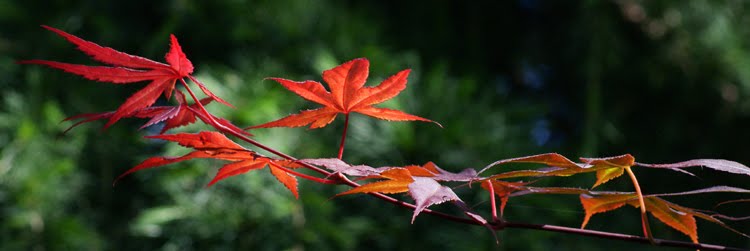
Uncovering Historical Census and Cemetery Records
Here are the answers to the Landmarks and Geophysical Saskatchewan Placenames. Quiz Two. Along with the quiz, Saskatchewan historical information and invaluable resources to locate placenames in Saskatchewan were provided.
Genealogists have much to gain by studying a map of rural municipalities in Saskatchewan. Towns, villages, resort villages and rural municipalities are legislated under The Municipalities Act. The municipality provides services, and facilities necessary and desirable for all or part of the municipality. When seeking ancestral records, rural cemeteries are classified by their rural municipality. The cemetery may be privately run or under the stewardship of the village or local religious community.
Census records canvas individuals by enumeration areas. Rurally the census records the legal land description as the address for each resident. Additionally, the rural municipality has been recorded by the census representative as the residential address in some census years, particularly on the newly released 1916 census records.
Studying historical maps which show the evolution of Saskatchewan's boundaries such as those in the Atlas of Saskatchewan are invaluable to the genealogist to understand the land areas of Rupert's Land, and the districts of Assiniboia, Saskatchewan and Athabasca (also known as Athabaska) in the North West Territories. The area was designated as the province of Saskatchewan in 1905, the North West Territories between 1870 and 1905, and Rupert's Land 1670 to 1870.
Additionally perusing Saskatchewan historical places in conjunction with their modern area names along with rural municipalities and their names facilitates the location of local history and family biography books which were compiled by communities for the 50th and 75th provincial anniversaries.
Quiz Two Answers
1. Algae, Water basin. Answer. Green Lake. Green Lake is a northern village of Saskatchewan which had 361 residents in 2006, the last census. Located amidst the lakes region of Saskatchewan, the village is 17 km (11 miles) from the lake of the same name.2. Sight, Summit. Answer. Eye Hill. The rural municipality of Eye Hill No. 382 was incorporated in 1910 and locates its offices in Macklin, Saskatchewan. The rural municipality reeve and councilors serve a population between 650 to 700 residents.
3. Grand earth. Answer. Goodsoil. Located in the rural municipality of Beaver River No. 622, Saskatchewan, the village of Goodsoil has a population of about 250 residents. Father J. Shultz and F.J. Lange Sr. came together offering land in the area in 1926.
4. Rapid, Waves. Answer Swift Current. The city of Swift Current makes its home on the banks of the Riviere au Courant or the Swift Current Creek. The creek and Battleford-Swift Current Red River Cart Trail encouraged settlement, and ranches sprang up which were further enhanced by the Canadian Pacific Railway depot and bridge across the creek. As early as 1881, the area had developed a Local Improvement District, and the settlement of Swift Current became a village in 1903. Currently a city of about 145,000 residents along the Trans Canada Highway. An early letter may show the address as SC, ASSA, NWT or Swift Current, District of Assiniboia, North West Territories.
5. Expansive panorama. Answer. Broadview. The town of Broadview, population 611 (2006) received its name from the Canadian Pacific Railway Company CPR in 1882. Historical documents may show the location as Broadview, District of Assiniboia, North West Territories until the province was formed in 1906. Abbreviated the location may read Broadview, Assa, NWT. Assiniboia was demarked as East and West Assiniboia on many historical maps, and Broadview would have been within East Assiniboia, whereas Swift Current (above) would have been located in West Assiniboia.
6. A bend or half turn. Answer. Elbow. The village of Elbow is located within the Loreburn No. 254, Rural municipality. With about 300 persons, Elbow is located on the newly formed manmade Lake Diefenbaker, originally the village was founded upon the South Saskatchewan River in 1909. Lake Diefenbaker is a reservoir created following the construction of the Gardiner Dam on the South Saskatchewan River and the Qu'Appelle River Dam
7. Gigantic, Watercourse. Answer. Big River.
The town of Big River has over 700 residents and is situated in the rural municipality of Big River No. 555. The river through the area was first named by the local Cree. Oklemow Cee-Pee translates into Big River. On historical maps this area would have been a part of Rupert's Land 1670 to 1870. Later historical documents may show the address as either township 56 range 7 west of the 2nd meridian or Big River, District of Saskatchewan, North West Territories between 1870 and 1905. Abbreviated this would be Big River, Sask, NWT. Note; the provisional district of the North West Territories named Saskatchewan does not comprise the same land area as the current province of Saskatchewan. The District of Saskatchewan was only the central portion, between townships 35 and 70.
8. Colour, Meadow. Answer. Yellow Grass. Around 400 persons make their home in the town of Yellow Grass, Saskatchewan. Yellow Grass, had a post office as early as 1896, and it incorporated as a village in 1903 therefore, it would show up on historical documents as Yellow Grass, District of Assiniboia, North West Territories. Located in the south western portion of the province, the Greater Yellow Grass Marsh was responsible for mudslides, and spring flooding in the 1800s and early 1900s. Over 20 dams on the Souris and Qu'Appelle Rivers were required to alleviate the flooding of settlements.
9. Diminutive Mountains. Answer. Little Hills. Little Hills 158—517.20 hectares (1,278.0 acres), Little Hills 158A—38.30 hectares (94.6 acres), Little Hills 158B—131.20 hectares (324.2 acres) are Indian Reserves of about 5 persons located at township 70 range 23 West of the 2nd Meridian about 13 km (8 mi) from the town of La Ronge. These are 3 of the 19 Indian Reserves of the Woodland Cree Lac La Ronge First Nations. La Ronge & Stanley Mission Band of Woods Cree Indians signed Treaty 6 in 1889. Historically the location of the Little Hills reserves was on the border of the North West Territories' Provisional District of Saskatchewan which encompasses township 70, and Provisional District of Athabasca which was north of township 71.
10. Colour, Soil. Answer. Red Earth. Red Earth 29 is an Indian Reserve of 383 residents as well as an unincorporated area or locality found in Carrot River 29A. Red Earth and Red Earth 29 are 5km (3 mi) from each other. Following Treaty 5, signed in 1876, the Red Earth Plains Cree First Nation reside at Red Earth 29 which was first surveyed in 1884 at townships 51, 52 ranges 6,7 W of the 2nd meridian. Carrot River Indian Reserve was surveyed 1894. This would place both historically in the provisional district of Saskatchewan, NWT before Saskatchewan became a province in 1905.
Learning more about the historical evolution of the country, its provinces and regions enables a genealogist to know where their ancestor lived, and where to find current records.
________________________________________________________________________________
Quizzes:
Test your knowledge of Saskatchewan ~ Quiz One.
The Value of Standardizing Placenames for Genealogists. Quiz One Answers.
Landmarks and Geophysical Saskatchewan Placenames. Quiz Two.
For more information:
•Saskatchewan One Room Schoolhouse Project
•Online Historical Map Digitization Project
•Search Saskatchewan Placenames
•How do I locate my Ancestors Home Town in Saskatchewan?
•Maybe the Ghosts Will Live Again
Saskatchewan Ghost Towns...
________________________________________________________________________________
Related Posts:
•The Value of Standardizing Placenames for Genealogists. First Quiz Answers.
•Test Your Knowledge of Saskatchewan's Placenames. First Quiz.
•What can be found at the NEW Saskatchewan Provincial Archives website?
•The Era of Saskatchewan One Room Schoolhouses
•Why were Canadian "Last Best West" homesteads created?
•Love and Marriage in Saskatchewan- a comprehensive guide
•How did pioneers travel to their prairie homesteads?
•Why were Canadian "Last Best West" homesteads created?
•How to locate birth, marriage and death certificates in Saskatchewan, Canada
•Are there genealogy sites that can compete with Ancestry.com?
________________________________________________________________________________________
Follow me on Word Press, Blogger, Facebook, Flickr, Twitter, Tumblr, Live Journal, Sask Gen Web Ancestry.com and Flickriver
________________________________________________________________________________________

________________________________________________________________________________


Inspiring Humility ~ Harebells by Julia Adamson
Related articles
- The Value of Standardizing Placenames for Genealogists. Quiz Answers (aumkleem.wordpress.com)
- Landmarks and Geophysical Saskatchewan Placenames. Quiz Two. (aumkleem.wordpress.com)
- Test Your Knowledge of Saskatchewan Placenames (aumkleem.wordpress.com)
- Vandals tilt a windmill in rural Saskatchewan (cbc.ca)
- Sandbar appears on Prairie river, but summer fun on 'Saskatoon Beach' remains a municipal offence (news.nationalpost.com)



